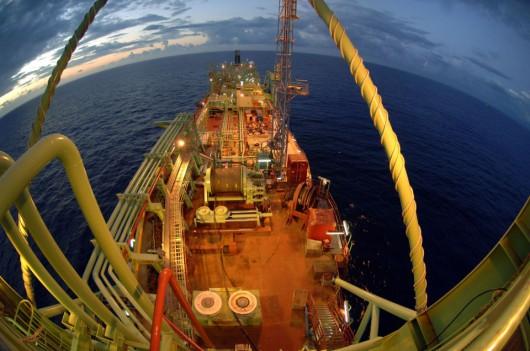
PETROBRAS CUTS EMISSIONS

An unparalleled technology to cut greenhouse gas emissions through carbon dioxide capture is being developed on a demonstration scale at Petrobras' Shale Industrialization Facility (known as SIX) in Paraná, in partnership with the company's Cenpes research center.
This technology is now being tested in a prototype fluid catalytic cracking unit (FCC) – a facility that transforms heavy crude into light oil products. This is the first pre-industrial scale FCC unit in the world to use oxy-combustion technology (the burning of a fuel using pure oxygen instead of air) to capture carbon dioxide, a gas released during industrial processes in refineries.
FCCs are very important facilities in the manufacture of oil products, such as gasoline and liquefied petroleum gas (LPG), and they are the main individual sources of refineries' CO2 emissions, accounting for around one-third of total emissions of this gas. The objectives of the tests carried out so far are to evaluate the new technology on a scale closer to industrial scale and to identify areas for further development.
Based on data obtained from the most recent tests, the researchers involved expect to be able to capture at least 90% of the CO2 emitted when the technology is applied in industrial plants. They also expect to generate a stream of CO2 with a minimum purity level of 95%, ready to sell to CO2-purchasing industries, to inject into oil wells to increase output (known as enhanced oil recovery), or to inject into natural underground reservoirs to be retained there (called geological storage).
The oxy-combustion process has proved to be more financially viable than post-combustion technology, which is traditionally used to capture CO2. An evaluation made in the project's previous stage showed that oxy-combustion is able to bring about a significant reduction in costs – around 40% – in relation to the traditional technology.
Carbon dioxide capture has been a challenge for oil companies across the world, and this challenge also encompasses the transportation and geological storage of CO2. To implement this technology, legislation and regulations are being drawn up to define the technical, social and environmental criteria that need to be met.
Although specific legislation regarding greenhouse gas emission reduction targets does not exist in Brazil, nor any obligation to disclose relevant figures, every year, in its Social and Environmental Appraisal, Petrobras publishes an inventory of its greenhouse gas emissions and measures taken to contribute to mitigating climate change, as well as its voluntary goals.
pennenergy.com



